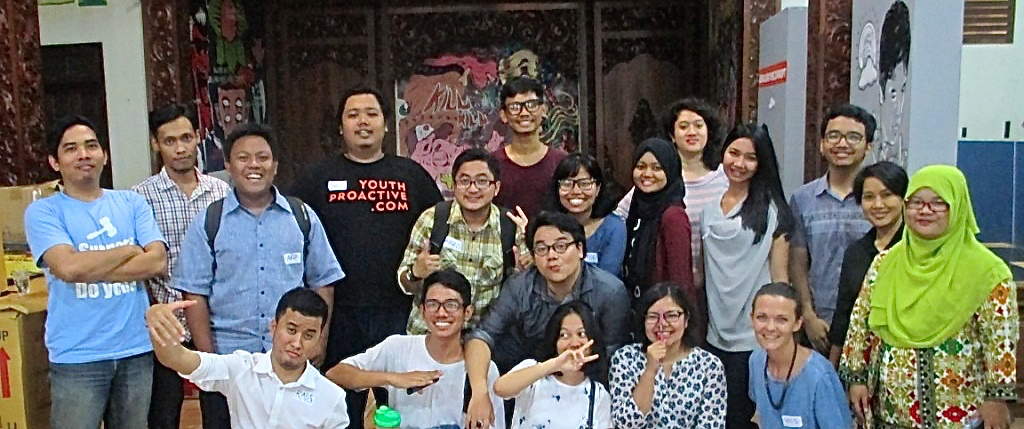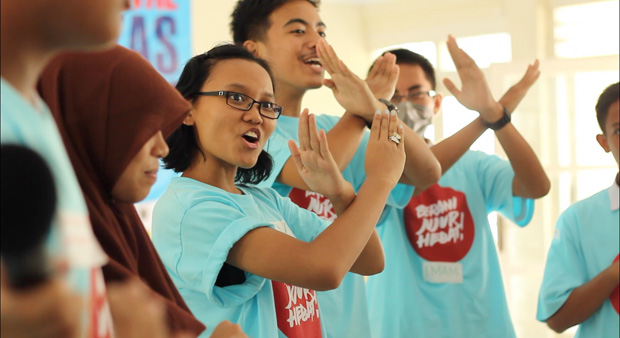NEWS
August 15, 2016

IN BRIEF
By: Victoria Forsgate, Accountability Lab’s Indonesia Country Representative. Today’s young people are some of the most connected and committed activists for accountability, transparency and citizen engagement we’ve seen for generations. In recent months, I’ve been scoping how Accountability Lab could support young people to build collaborative movements for change in Indonesia, where 26% of the population are 15-30 years old (that’s a massive 62 million people) and addressing corruption is increasingly a decisive issue for voters at election time. Connecting with youth activists, youth-led organisations and anti-corruption activists here has been inspiring, challenging and energising. By working together, we believe […]
SHARE
By: Victoria Forsgate, Accountability Lab’s Indonesia Country Representative.
Today’s young people are some of the most connected and committed activists for accountability, transparency and citizen engagement we’ve seen for generations. In recent months, I’ve been scoping how Accountability Lab could support young people to build collaborative movements for change in Indonesia, where 26% of the population are 15-30 years old (that’s a massive 62 million people) and addressing corruption is increasingly a decisive issue for voters at election time.
Connecting with youth activists, youth-led organisations and anti-corruption activists here has been inspiring, challenging and energising. By working together, we believe that the Lab’s flagship models like the Accountability Incubator and Integrity Idol could make a useful contribution to what local civil society are already doing. There is also much that the Lab can learn from social movements in Indonesia about how to build accountability.
Accountability Lab regularly reflects on ‘what are we learning about learning’. In this post, the first of a new series on our work in Indonesia, we put the spotlight on four principles that even the most experienced movement builders can be reminded of from time to time.
1. Up the ambition on ‘participation’. Youth participation is a term that comes naturally to more and more governments, NGOs, and development agencies in 2016. We should celebrate this – not least because it creates the space to push them even higher up the ladder of participation. In my own experience, organisations too frequently delay consulting with young people until the big decisions have already been made. This makes it more likely that young people are essentially used to further the objectives of older adults and that’s particularly damaging when the goal is to build a diverse, democratic and collaborative movement. We can and should call out our colleagues, development partners and governments when they do this and we need to lead by example: setting aside time and resources to create spaces where decision-making power is shared or, even better, when young people initiate action, and are given the support and resources to boot.
2. Find the common ground. “We are far more united and have far more in common with each other than things that divide us”, said the late humanitarian and UK MP Jo Cox. If I never leave the youth sector it will be because working with young people reminds me of this every single day. One of the most important roles that anyone engaging with young people can play is to convene and enable youth-led organisations to establish their areas of common interest. In many instances, governance, accountability and transparency are major enablers of (or barriers to) common youth priorities including accessing quality education, reducing inequality, conserving the environment and protecting human rights. By identifying the things that unite different groups, we can be better at building collaborative movements for change that amplify the actions and agendas of others – rather than be part of the problem by ignoring or dismissing them.
3. Be critical on how change happens. Professional political lobbyists don’t have the monopoly on understanding how change happens. Consult widely, especially amongst young activists who are often closest to emerging issues and frequently have the best ideas on effective ways organising and mobilising. Developing a Theory of Change can be a daunting task but it’s well worth it to understand if and how your activities are contributing to change, rather than just keeping you busy. Most importantly, take the time to do it together with people from across the movement and reflect back on it regularly. Make the most of this process to listen to stories of how change and empowerment happen, and to challenge the assumptions or privileges that you or your organisation might take for granted.
4. Take intergenerationality seriously: Youth have been at the forefront of many of history’s biggest social and political movements, but the most sustainable are usually highly intergenerational. Black Lives Matter have been clear about the importance of ‘younger and older movers’ in strengthening their movement and ‘intergenerational equity’ has been identified as an important dimension of climate justice. By looking at issues and campaign strategies through an intergenerational lens we can better understand the dynamics and values within and between different generations, and build activities, structures and movements that redistribute power more equitably, rather than reinforce the status quo.
What is your experience of putting these into practice? What did we miss? Please join the conversation in the comments below or email Victoria at victoria@accountabilitylab.org.
It’s still early days for the Lab in Indonesia. Look out for the next blog on how young people and their views on integrity in Indonesia are shaping our campaign in search of honest public servants.

